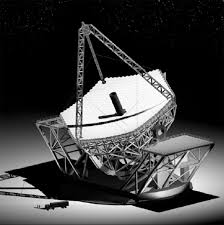
Breaking News
 HERE'S WHAT NO CASH ACTUALLY MEANS (Dave Ramsey re-post)
HERE'S WHAT NO CASH ACTUALLY MEANS (Dave Ramsey re-post)
 The Silver Shift: Why Stackers Are DUMPING 90% Silver & Buying SilverBitz!
The Silver Shift: Why Stackers Are DUMPING 90% Silver & Buying SilverBitz!
 Eye-bouncing - #SolutionsWatch
Eye-bouncing - #SolutionsWatch
 'Targeted, Antisemitism': 16 Dead, 38 Injured After Father & Son Terrorists Attack...
'Targeted, Antisemitism': 16 Dead, 38 Injured After Father & Son Terrorists Attack...
Top Tech News
 This tiny dev board is packed with features for ambitious makers
This tiny dev board is packed with features for ambitious makers
 Scientists Discover Gel to Regrow Tooth Enamel
Scientists Discover Gel to Regrow Tooth Enamel
 Vitamin C and Dandelion Root Killing Cancer Cells -- as Former CDC Director Calls for COVID-19...
Vitamin C and Dandelion Root Killing Cancer Cells -- as Former CDC Director Calls for COVID-19...
 Galactic Brain: US firm plans space-based data centers, power grid to challenge China
Galactic Brain: US firm plans space-based data centers, power grid to challenge China
 A microbial cleanup for glyphosate just earned a patent. Here's why that matters
A microbial cleanup for glyphosate just earned a patent. Here's why that matters
 Japan Breaks Internet Speed Record with 5 Million Times Faster Data Transfer
Japan Breaks Internet Speed Record with 5 Million Times Faster Data Transfer
 Advanced Propulsion Resources Part 1 of 2
Advanced Propulsion Resources Part 1 of 2
 PulsarFusion a forward-thinking UK aerospace company, is pushing the boundaries of space travel...
PulsarFusion a forward-thinking UK aerospace company, is pushing the boundaries of space travel...
 Dinky little laser box throws big-screen entertainment from inches away
Dinky little laser box throws big-screen entertainment from inches away
 'World's first' sodium-ion flashlight shines bright even at -40 ºF
'World's first' sodium-ion flashlight shines bright even at -40 ºF
Giant Moon Based Telescopes Will Detect Alien Life and Measure Mountains in Other Solar Systems

Space capabilities from SpaceX Super Heavy Starship and being able to build in space will enable 1000 to 1 million times larger projects on the moon and in cis-lunar orbits.
OWL-Moon
OWL-MOON: Very high resolution spectro-polarimetric interferometry and imaging
from the Moon: exoplanets to cosmology
A 100-meter space telescope on the moon will let us directly observe the height of mountains on exoplanets.
A giant moon telescope will let us answer three major questions in astronomy.
1) the detection of biosignatures on habitable exoplanets,
2) the geophysics of exoplanets and
3) cosmology.
Detecting Alien Life in Other Solar Systems
One of our main science objectives is the characterization of exoplanets and biosignatures. There are about ten potentially habitable planet candidates up to 10 pc. But there is no guarantee that even a single one will present biosignatures. We must enlarge the sample and go up to say 40 pc. An Earth-sized planet at 1 AU from a G star has a planet/star brightness ratio of 3.10^−9 for an albedo of 0.3. Thus, for a 8th magnitude star, it means a 32nd magnitude target. For 1 nm spectral resolution spectroscopy needed to detect atomic and molecular emission lines, consider the goal of 1000 photons detected in 3 hours. This needs a 50-meter telescope. To detect 500 photons in the bottom of absorption lines having a depth 10 times the continuum in 3 hours, one would need a 100-meter telescope.



